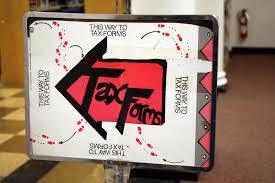
Form 1099-K is an essential tax document issued by payment settlement entities (PSEs) to report certain transactions made by merchants or business owners. It assists the Internal Revenue Service (IRS) in tracking and ensuring accurate tax reporting. As regulations evolve and adapt to the changing business landscape, individuals and businesses must stay informed about the latest guidelines related to Form 1099-K. This article will explore the key aspects of Form 1099-K and provide updated information for 2023.
What is Form 1099-K?
Form 1099-K is a tax document that reports payments made to a taxpayer via payment card transactions and third-party network transactions. Payment settlement entities, such as payment processors and online platforms, are responsible for issuing this form to individual and business taxpayers who meet the reporting thresholds.
Reporting Thresholds
As of 2023, the reporting thresholds for Form 1099-K remain unchanged. A PSE is required to file Form 1099-K if, in the previous calendar year:
The total gross payments made to the taxpayer exceed $20,000, and
The total number of transactions conducted by the taxpayer exceeds 200.
It is important to note that these thresholds apply to each individual taxpayer or business entity separately.
Transactions Covered by Form 1099-K
Form 1099-K captures two types of transactions:
Payment Card Transactions: These include payments made through credit cards, debit cards, and any other type of payment card.
Third-Party Network Transactions: This category covers transactions facilitated by online platforms or third-party payment processors. Examples of such platforms include PayPal, Stripe, and other similar services.
What Information is Reported on Form 1099-K?
Form 1099-K reports the gross payment amount processed through a payment card or third-party network transactions. It does not include adjustments for refunds, chargebacks, or any other fees imposed by the payment settlement entities. The form also includes the taxpayer's name, address, and Taxpayer Identification Number (TIN).
Impact on Taxpayers
Receiving a Form 1099-K does not automatically mean that the taxpayer owes taxes on the reported amount. Instead, it serves as an informational document for the IRS to match the reported income on the taxpayer's tax return. The taxpayer's responsible for accurately reporting their income, including the amounts reported on Form 1099-K.
Form 1099-K and Business Expenses
When reporting income from Form 1099-K, taxpayers must consider their deductible business expenses. Taxpayers should deduct any applicable expenses from their gross income to determine the taxable income. Deductible expenses may include fees charged by the payment processor or platform, shipping costs, and other business-related expenses.
Corrections and Discrepancies
If you receive a Form 1099-K that contains incorrect or outdated information, it is essential to promptly contact the PSE responsible for issuing the form. They should be able to assist you in correcting any errors or discrepancies. Additionally, if you discover discrepancies between the amounts reported on your Form 1099-K and your actual income, it is important to address them by filing an amended tax return if necessary.
Recordkeeping and Documentation
Taxpayers should maintain accurate records and documentation to support the income reported on their tax returns, including Form 1099-K. This documentation may include sales receipts, invoices, and any other relevant records. Good recordkeeping practices can help taxpayers in case of an IRS audit or any future inquiries regarding their tax filings.
As the business landscape evolves and regulations adapt, staying informed about Form 1099-K is crucial for individuals and businesses. The updated guidelines for 2023 include the following:
Understanding the reporting thresholds.
The types of transactions covered.
The information reported on the form.
The impact on taxpayers.
The consideration of business expenses.
Handling corrections and discrepancies.
The importance of recordkeeping.
By being aware of the reporting thresholds, taxpayers can determine if they meet the criteria for receiving a Form 1099-K. This document captures payment card transactions and third-party network transactions. It's important to note that the thresholds apply to each taxpayer or business entity separately.
Form 1099-K reports the gross amount of payments processed, excluding adjustments for refunds, chargebacks, or fees. It includes the taxpayer's identifying information, such as name, address, and TIN. However, receiving a Form 1099-K doesn't automatically mean owing taxes on the reported amount. Instead, it serves as an informational document for the IRS to match the reported income on the taxpayer's tax return. Taxpayers are responsible for accurately reporting their income, considering deductible business expenses.
When reporting income from Form 1099-K, taxpayers should deduct applicable business expenses from the gross income to determine taxable income. Deductible expenses may include payment processor fees, shipping costs, and other business-related expenses.
In the case of errors or discrepancies on the received Form 1099-K, taxpayers should promptly contact the responsible PSE to correct the information. Additionally, if discrepancies exist between the reported amounts and actual income, taxpayers should address them by filing an amended tax return if necessary.
Maintaining accurate records and documentation is crucial. Taxpayers should keep sales receipts, invoices, and other relevant records to support the income reported on their tax returns, including Form 1099-K. This practice helps in case of an IRS audit or future inquiries about tax filings.
In conclusion, staying informed about Form 1099-K is essential for individuals and businesses to comply with tax regulations. Individuals can accurately report their income and consider deductible expenses by understanding the reporting thresholds, the types of transactions covered, the information reported, and the impact on taxpayers. Promptly addressing corrections and discrepancies and maintaining accurate records further strengthen the tax reporting process.
FOR MORE INFORMATION ON HOW PAT RASKOB CAN BEST HELP YOU WITH YOUR TAX FILING NEEDS, PLEASE CLICK THE BLUE TAB ON THIS PAGE.
THANKS FOR VISITING.
